Why are my bars so thin? I have tried setting width to 1 and they go really thick. I'm not sure what else to try. The default thickness is 0.8, is this how it should look?
import matplotlib.pyplot as plt
import matplotlib.dates as mdates
import pandas as pd
import numpy as np
working_runs = pd.DataFrame(np.random.uniform(1, 2, 210),
columns=['distance'],
index=pd.date_range('2019-06-01', periods=210, freq='D'))
summed = working_runs['distance'].resample('W').sum()
df = pd.DataFrame(summed)
fig, ax = plt.subplots()
ax.bar(df.index, df.distance)
ax.set_xticks(df.index)
ax.xaxis.set_major_formatter(mdates.DateFormatter("%B %d"))
ax.xaxis.set_minor_formatter(mdates.DateFormatter("%B %d"))
plt.xticks(rotation=90)
fig = ax.get_figure()
fig.set_figheight(10)
fig.set_figwidth(12)
plt.title('2019 Weekly Running Miles')
plt.ylabel('Distance /m')
fig.savefig("output.png")
I tried changing it like this:
ax.bar(df.index, df.distance,width=1)
0.9 does not look any different and 1.0 looks like this:



